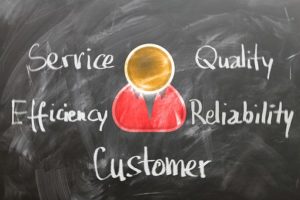Automation is a hot topic in today’s business world. Computerized solutions, mechanized systems, automated processes, auto-generated responses… these are the ways many industries, from banks to fast food to manufacturers, are looking to create a more consistent and efficient customer experience. Many companies are turning to BPM or Business Process Management programs, coaches, software and more to help them implement these automation practices. Some have done so, only to find the solution actually created more problems. Why did this happen?
In my experience, automation is put into place almost in a knee-jerk way for management to try to solve a problem they don’t quite understand. It becomes a ‘band-aid’ fix rather than the holistic approach it should be. The truth is that business process improvement and automation need to be like a hand in a glove, otherwise, it becomes just another failed attempt at efficiency and a short lived “Frankenstein” process.
The Goal of Automation
The main goal of automation is to produce better outcomes through a consistent, reliable end product. Often, this is for the benefit of the end user, or client. When a process works for the company, but not the customer, it ultimately will negatively impact the organization. Automation should enhance the customer experience, not only serve the organization. Here’s an example:
Bob finds the website of a widget he is interested in. He sends an email to the company asking a question about specs to make sure it fits his needs. He gets an auto response that the company has received his email. Within 4 hours, the company chat-bot responds to his email with an automated drip campaign that tells him to buy the widget, yet his original question remains unanswered.
This process appears to be customer responsive, but it really just buys the company time and doesn’t offer value to Bob. Meanwhile, Bob is likely to have shopped around, and maybe even make a purchase with a company who responded more promptly to his question.
Automation should be customer-focused and create real value.
The Role of an Automation Consultant
As a Lean Consultant, I work with companies who want to implement strategies that create true efficiency and add value to their clients, staff and/or vendors. By looking for trouble spots, holes and current processes, we can determine where efficiency is working well and where it could be tightened up. From there, we look at how automation can be implemented and the steps required to achieve the end results in a long lasting and effective way.
It is slowing down and taking a comprehensive look at all the steps and processes to make sure everything is a smooth and logical fit with the business and clients it is designed to serve. Not a one-and-done or quick fix, automation should be a robust tool that works with all the cogs of business to make it a truly holistic fix rather than a band-aid one.
PBEX, LLC provides a complete review and analysis of the business processes that create efficiency and profitability, and the barriers to them. Contact us today to learn more about lean business management and to schedule your review with a process improvement and automation expert.









